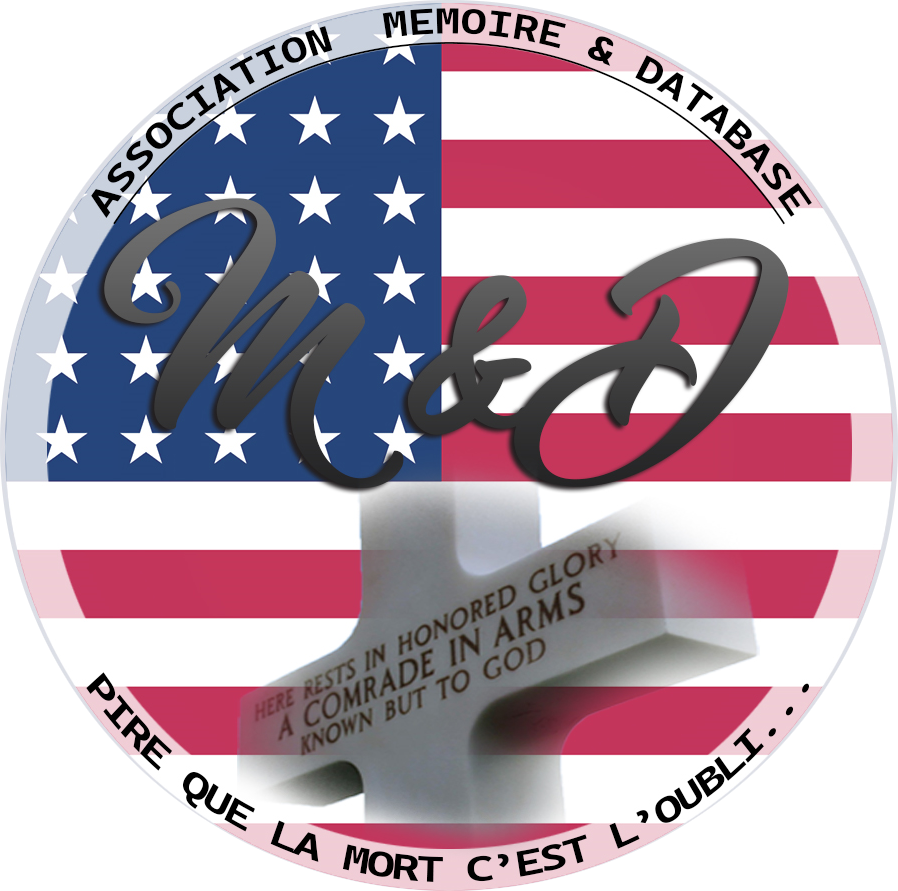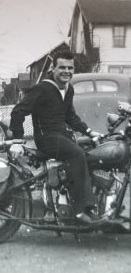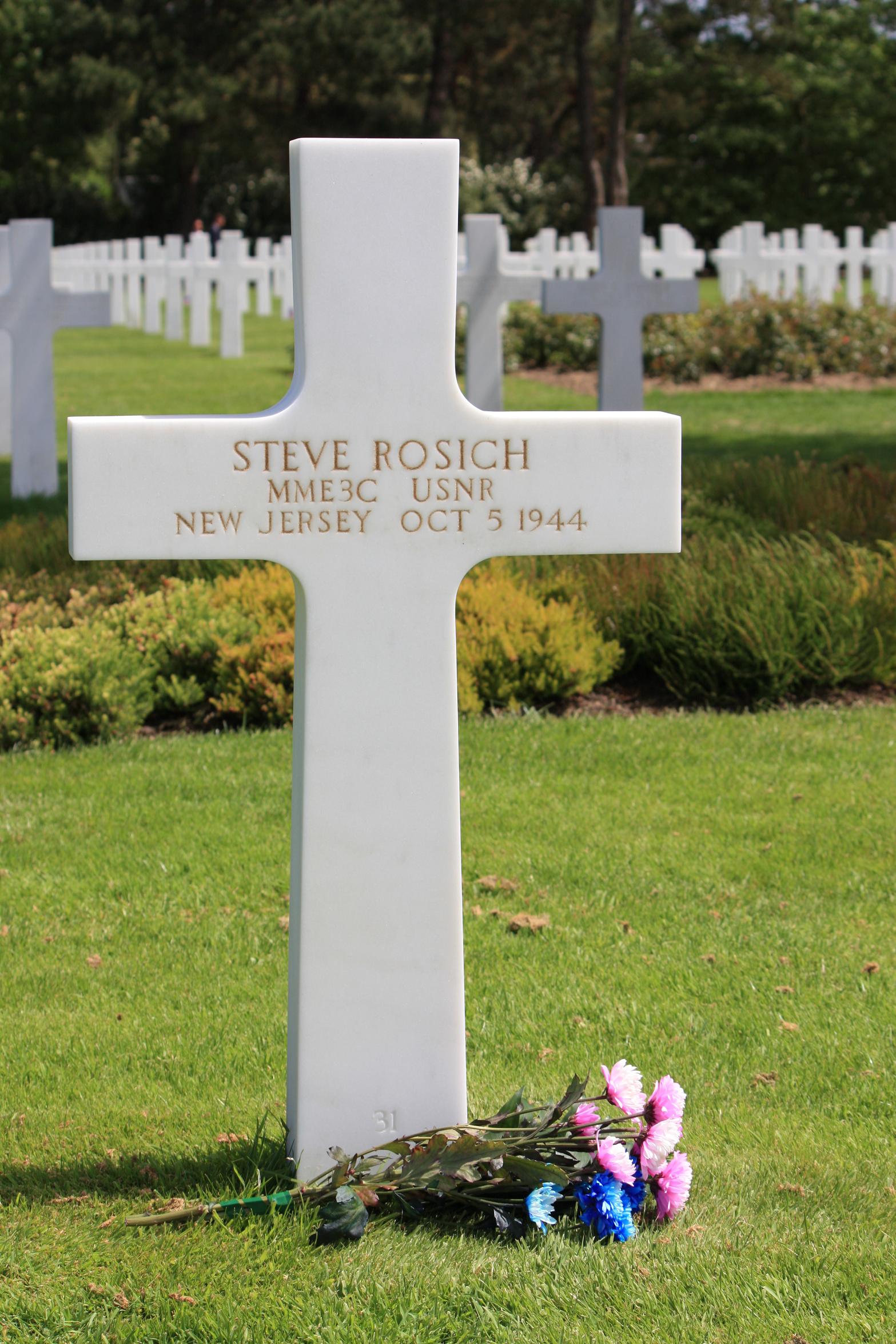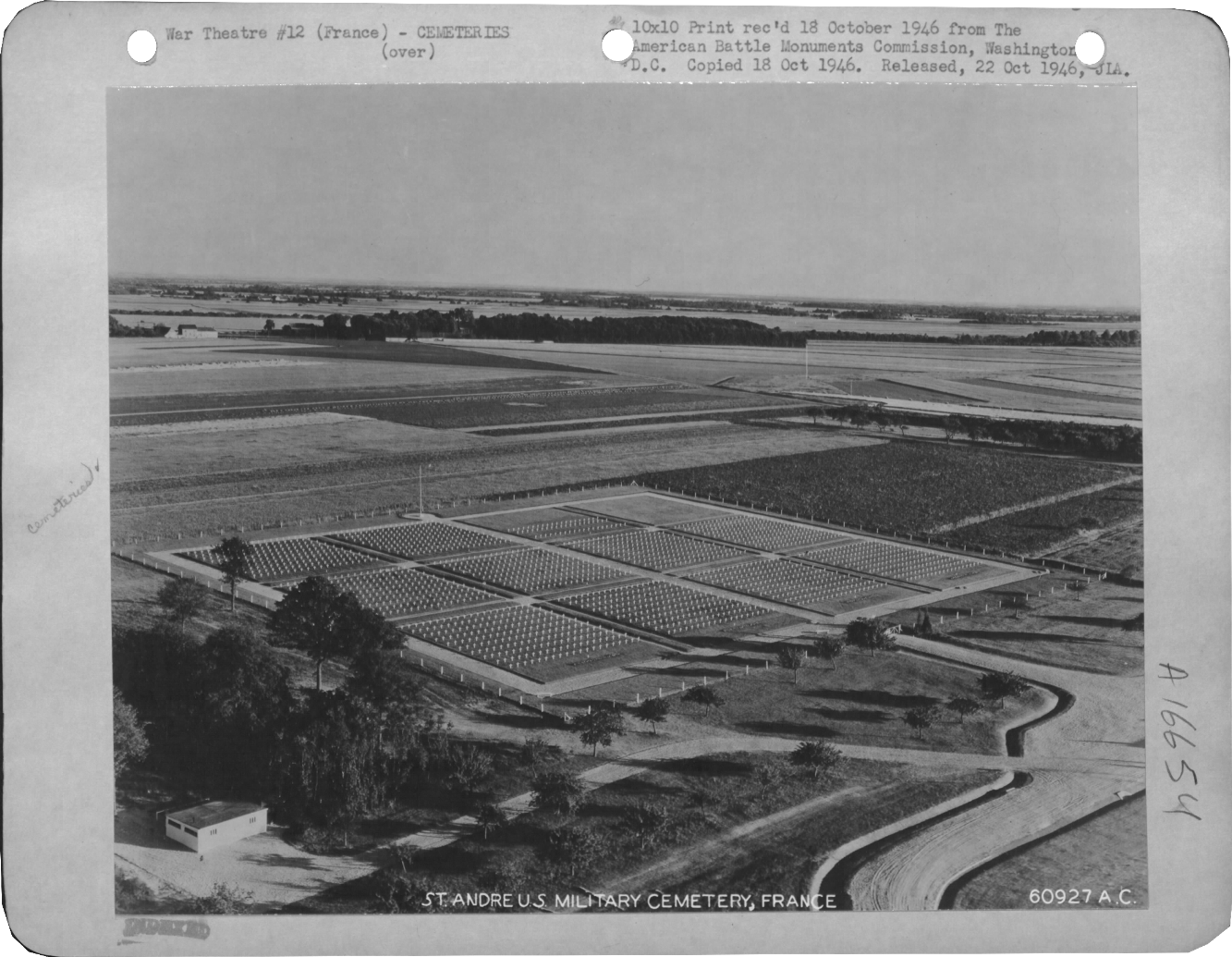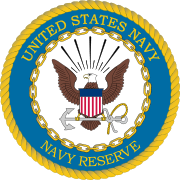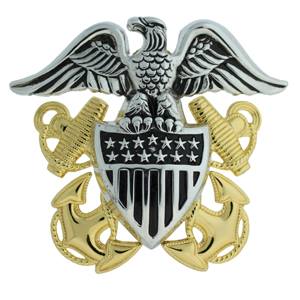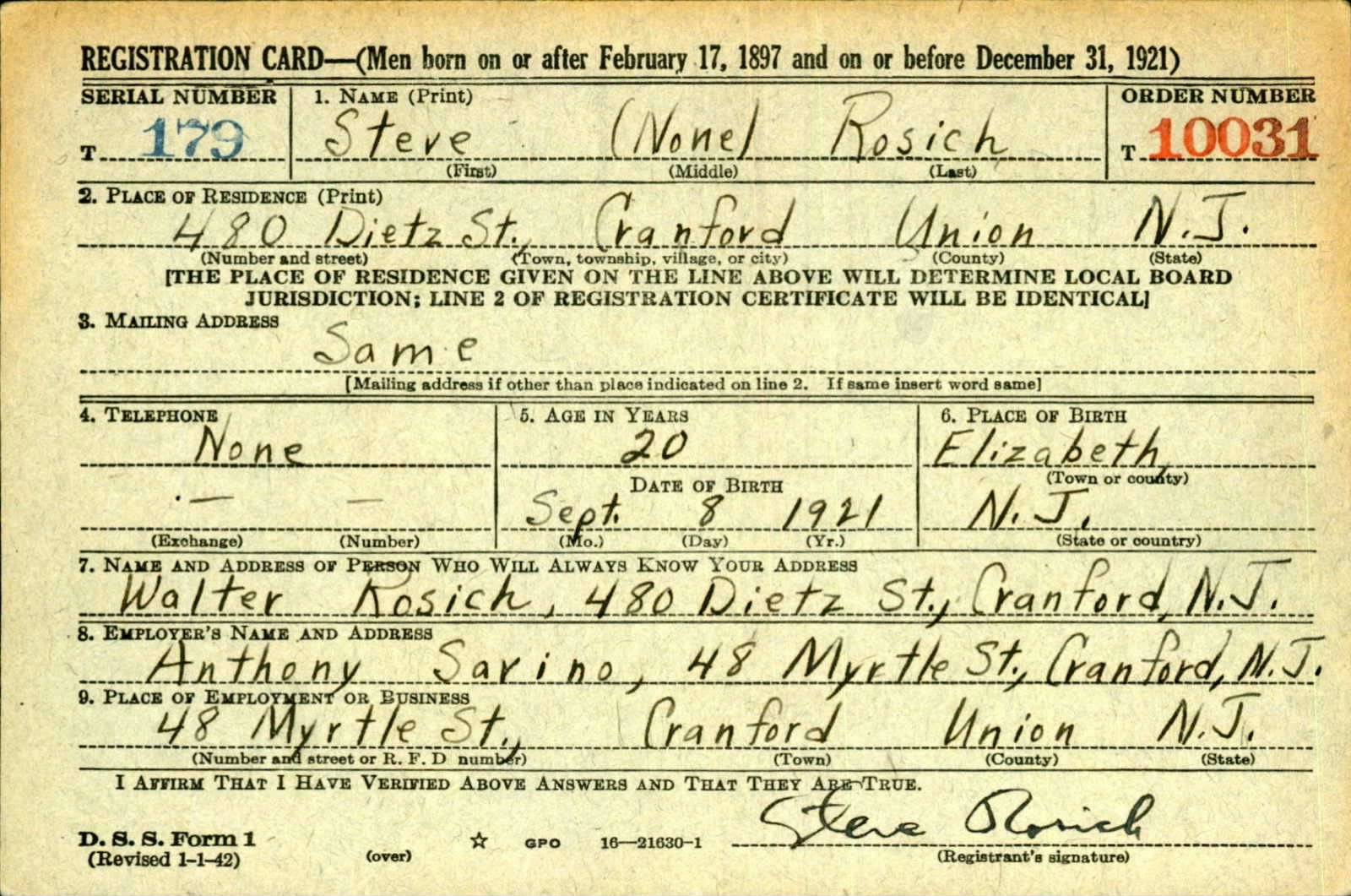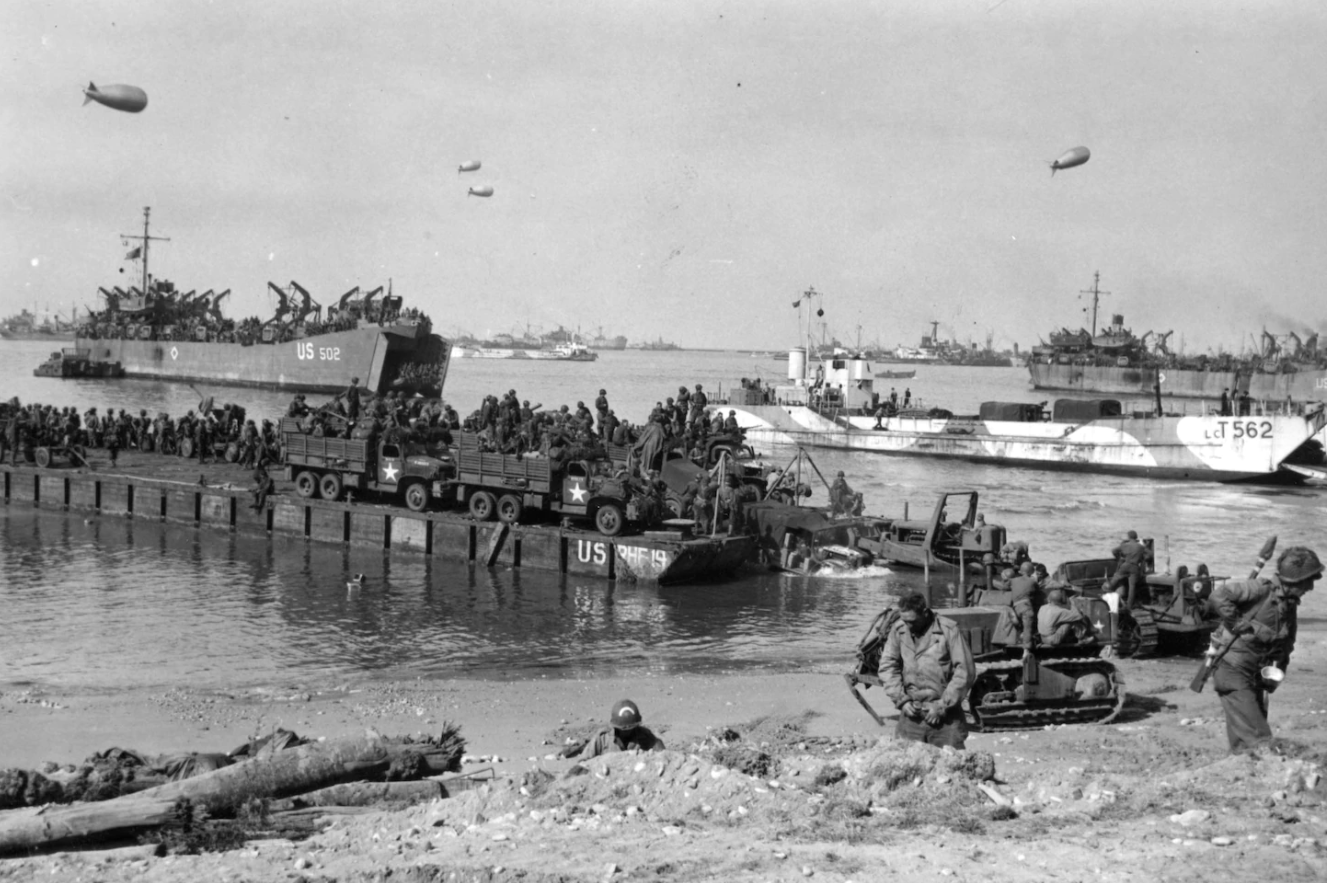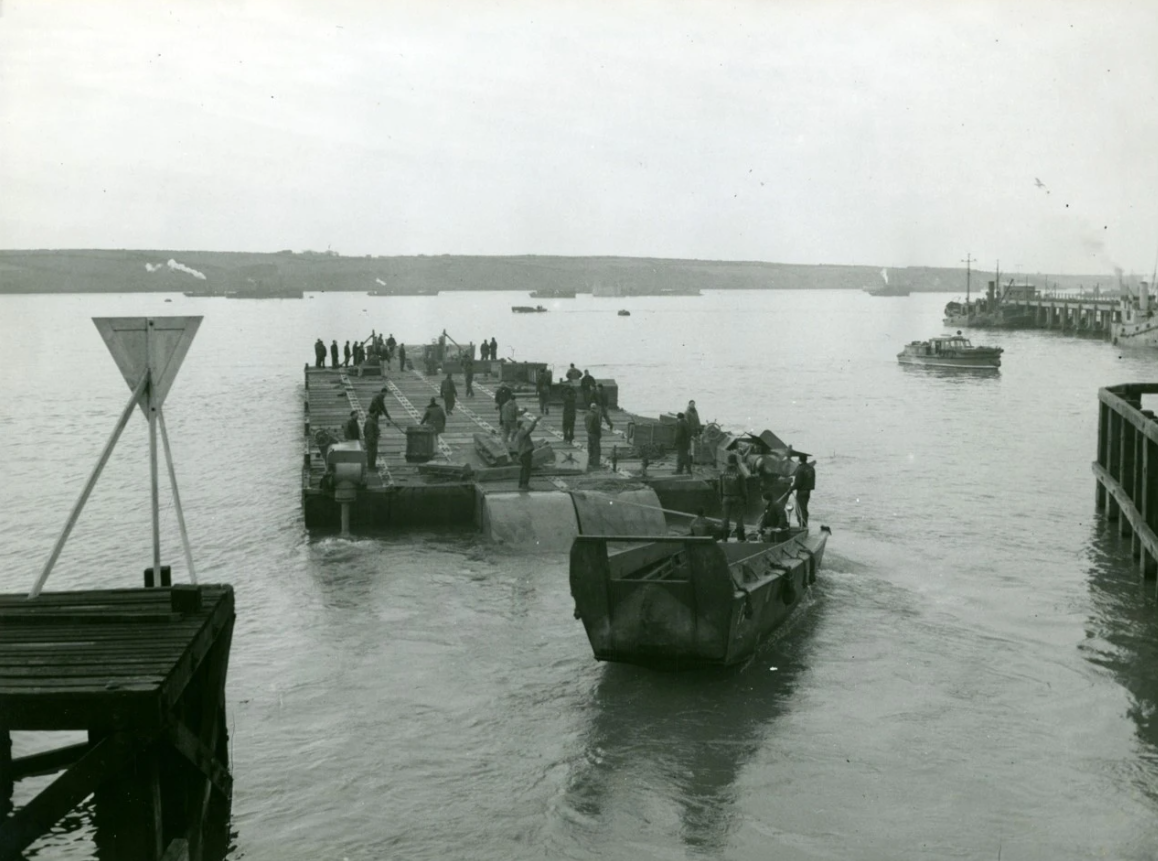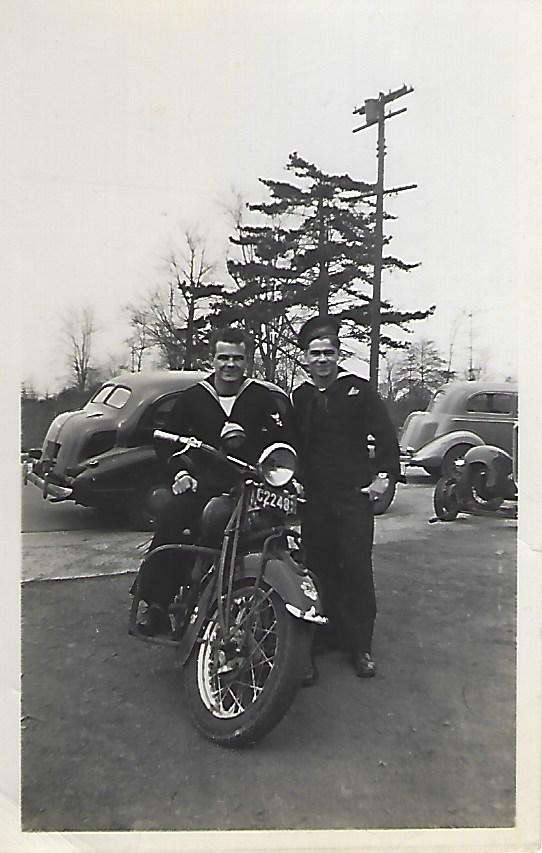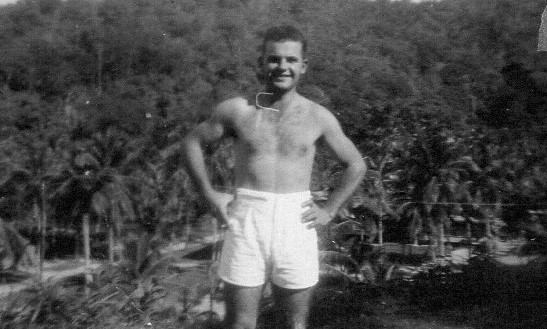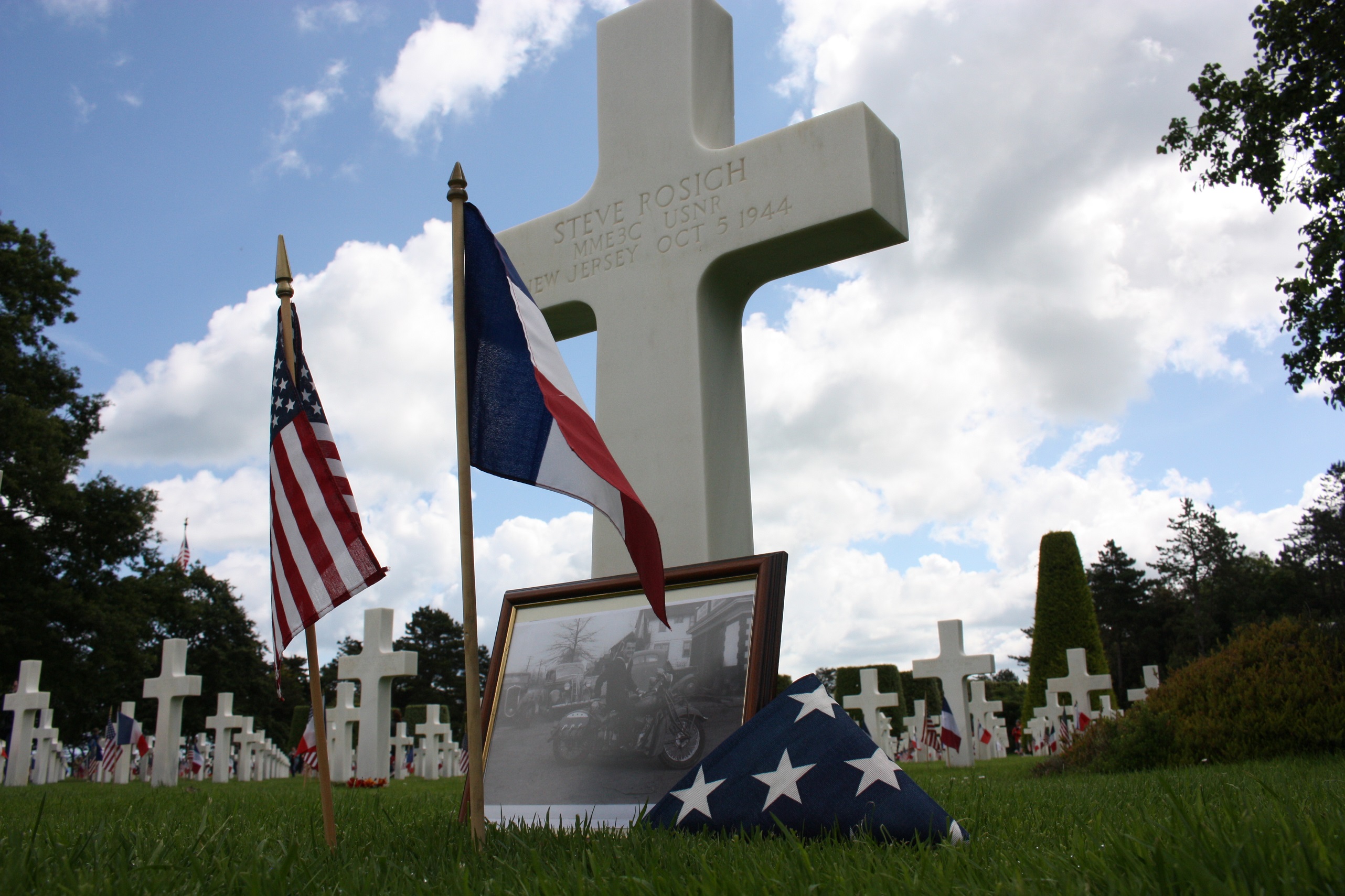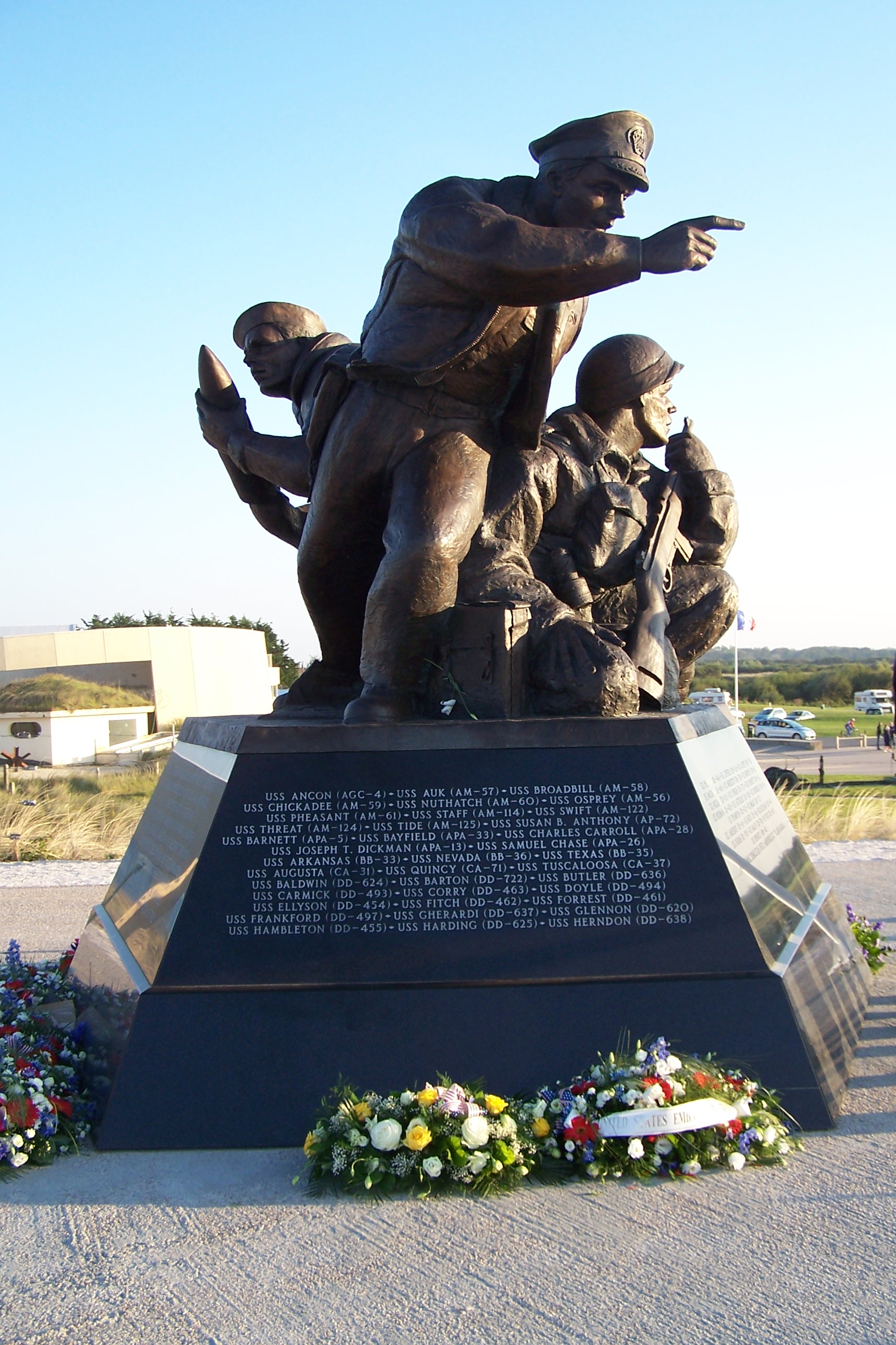|
Steve ROSICH
| |||||||
|---|---|---|---|---|---|---|---|
|
Source : Bruno Cadeville
| |||||||
| NUMBER OF SERVICE | 7061311 | ||||||
| AGE | 23 yo | ||||||
| DATE OF BIRTH | 8 September 1921 | ||||||
| ENLISTMENT STATE | NEW JERSEY | ||||||
| FAMILY | Single | ||||||
| RANK | Motor Machinist's Mate Third Class | ||||||
| FONCTION | |||||||
| JOB BEFORE ENLISTEMENT |  | ||||||
| DATE of ENLISTEMENT | July 1943 | ||||||
| BATTALION | 28th Naval Construction Battalion "SEABEES" | ||||||
| ARMY | United States Naval Reserve | ||||||
| DATE OF DEATH | 5 October 1944 |
Source : Bruno Cadeville | |||||
| STATUS | KIA | ||||||
| PLACE OF DEATH | Le Havre | ||||||
| CEMETERY TEMPORARY |
CEMTERY TEMPORARY of Saint-André N°3572
| ||||||
| CEMETERY | NORMANDY AMERICAN CEMETERY of Colleville | ||||||
| GRAVE |
| ||||||
| DECORATION |
| ||||||
| |||||||
| STORY | |||||||
|
Steve Rosich was born on September 8, 1921 from Hungarian migrant parents. He was the third child in the family, joining a brother, George, and a sister, Marie. |
Source : Fold3 | ||||||
|
Source : Bruno Cadeville & livre les bâteaux du Jour J. |
Rhino ferries Source : Bruno Cadeville & livre les bâteaux du Jour J. |
Source : Bruno Cadeville | |||||
|
With his mechanical skills, Steve naturally joined the US Navy and the Seabees in 1943. He integrated the Seabees formation center where he would learn how to adapt his skills in civil constructions to the military needs. He learned the military discipline and the use of light weapons. After training for three weeks, a battalion was constituted. Then, he was sent away for six weeks of an advanced military and technical training. At the end of this training, Steve joined the 30th Construction Battalion , stationed in the British West Indies, in the island of Trinidad. German submarines had been located in the waters surrounding the island, therefore a military presence in this area was needed. | |||||||
|
Source : Bruno Cadeville |
Source : Bruno Cadeville | ||||||
| Over a month after the D-Day, while the Battle of Normandy was raging, the 28th Battalion started its detachment over Cherbourg on July 7, 10 days after the city’s liberation. The Seabees started their expert work in order to make the port operational as soon as possible. Yet, 11 days are needed before the first shipment is delivered. In one month, the port would welcome 14 ships simultaneously. After this port, another important task waited for the 28th Battalion : the port of Le Havre. The city fell on September 20 and was completely destroyed. The 28th Battalion arrived in two detachments between September 17 and 20. The whole port was badly damaged, particularly most of the dock, the walls collapsed under the bombing or the demolitions. In order to develop as fast as possible the port’s capacity of manutention, a 1700 feet long dock made of floating pontoons was built, to provide bunks to five Liberty ships. Two Bailey bridges were used to connect the ground, clusters of stakes were rammed into the ground to provide moorings for the ships and so, hold the dock in place. Pontoons floats were built and set up in two of the biggest basins in the port, which gates were fixed. Also, a connection to ground was established, made of a 2x12 section of pontoon for each traffic lane. On October 5, while assigned to the 29th Construction Battalion for some work, Steve was on the beach in Le Havre. Several explosions resounded, causing him multiple and serious injuries. He died shortly afterwards. Whe pour un travail, Steve se trouve sur la plage du Havre, plusieurs explosion Steve’s parents received the Western Union Telegram , he was the 25th Cranford’s child to fall during the world conflict. On October 7, he was buried in Saint-André-de l’Eure (Eure) temporary military cemetery. On April 12, 1949, he was buried in Colleville-sur-Mer cemetery. | |||||||
|
Monument on Utah Beach Source : Bruno Cadeville | |||||||
| SOURCE INFORMATION & SOURCE PHOTO | Bruno Cadeville - Abmc.gov - Fold3 |
|---|---|
| PROGRAMMER | Henri, Garrett, Clive, Frédéric & Renaud |


